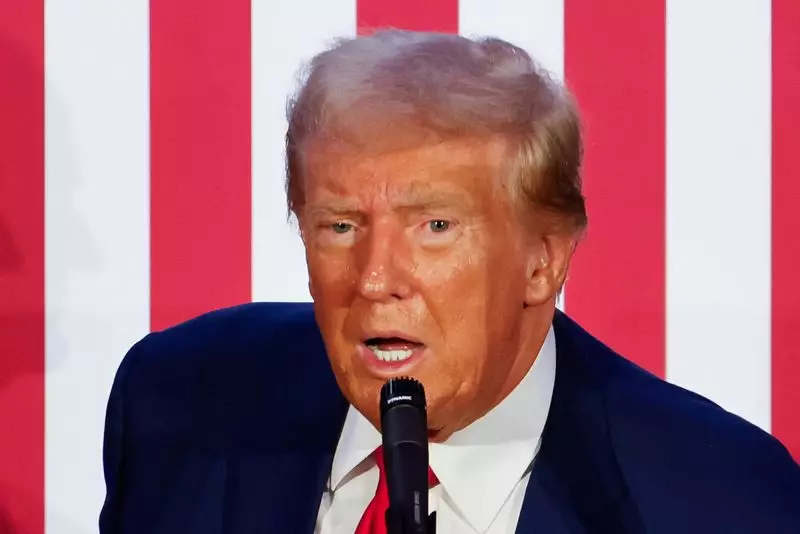The prospect of Donald Trump reclaiming the presidency has reignited discussions surrounding his controversial tariff proposals. Analysts from Barclays have raised concerns regarding the implications of these tariffs on the earnings of companies listed in the S&P 500, projecting significant financial repercussions if he were to implement them after a potential second term. The multifaceted nature of Trump’s plan, targeting an astounding $3 trillion worth of imports, suggests that the effects would not be confined merely to the domestic economy but would reverberate across global markets.
Trump’s tariff schemes, which include levies ranging from 10% to 20% on all foreign goods and a staggering 60% tax on products imported from China, are framed as measures to safeguard American jobs. The rationale behind these tariffs hinges on the notion of correcting perceived imbalances in trade, particularly with nations like China and countries of the European Union. During his presidency, Trump’s administration witnessed escalating trade tensions characterized by a series of punitive tariffs on Chinese imports, a pattern that seems poised to continue.
This return to aggressive tariff policies is positioned as an essential step toward curbing unfair trade practices, particularly against economies with which the U.S. maintains a significant trade deficit. However, while these intentions may resonate with certain segments of the electorate, they raise fundamental questions about the long-term economic sustainability of such an approach.
The financial analysts at Barclays predict that these forthcoming tariff proposals could impose a 3.2% drag on S&P 500 earnings in the next fiscal year. This is compounded by the possibility of retaliatory tariffs from affected nations, which could further escalate the impact to an additional 1.5%. While some may view these figures as modest, it is crucial to appreciate the larger economic landscape. The ripple effects of tariffs can lead to increased prices on consumer goods and may stifle growth in crucial sectors heavily reliant on global supply chains, including technology, industrials, and healthcare.
Moreover, the prospective burden on corporate earnings highlights the dual-edged nature of trade protectionism. While the administration argues that these policies are aimed at preserving American jobs, the reality is that raising tariffs could lead to higher production costs, ultimately passed on to consumers. The delicate balance between protecting domestic industries and fostering economic growth becomes even more pronounced in this scenario, as companies may be forced to make difficult decisions regarding their workforce and operational strategies.
Beyond immediate financial implications, the tariffs pose significant risks in terms of inflationary pressures. With supply constraints arising from heightened tariffs, a spike in prices is anticipated, particularly within the U.S. market. Such inflationary trends complicate the Federal Reserve’s current monetary policy, which has been focused on lowering interest rates to stimulate economic growth. Analysts foresee a situation where the Fed may initially resist rate cuts in order to address inflation, but as economic activity begins to slow amid uncertainties related to trade policies, a more aggressive stance on rate reductions could be warranted.
This interplay between trade policy and monetary policy underscores a critical challenge for the incoming administration, regardless of whether it is Trump or his Democratic rival, Kamala Harris. The likelihood of a divided Congress further complicates the landscape of economic decision-making, suggesting that much of the incoming president’s agenda, including potential tariff frameworks, may have to rely on executive actions rather than legislative measures.
As the U.S. approaches a pivotal election, the ramifications of Trump’s proposed tariffs raise essential questions about the future direction of U.S. trade policy. The economic implications span across corporate earnings, inflation, and monetary policy, highlighting the potential volatility that could come with a return to aggressive trade restrictions. As analysts project a divided Congress and uncertain economic conditions, the path forward requires careful navigation and strategic foresight from whoever takes the helm in the White House. In an increasingly interconnected global economy, the consequences of protectionist strategies must be critically weighed against the long-term goals of economic stability and growth.

